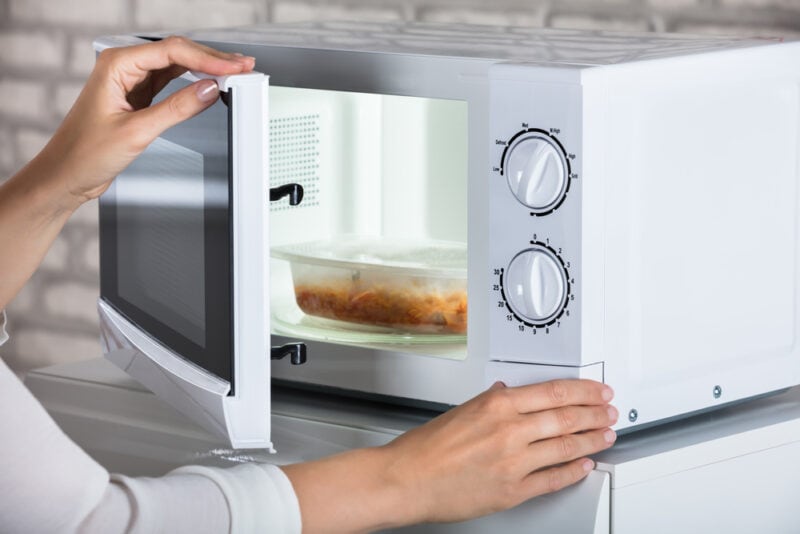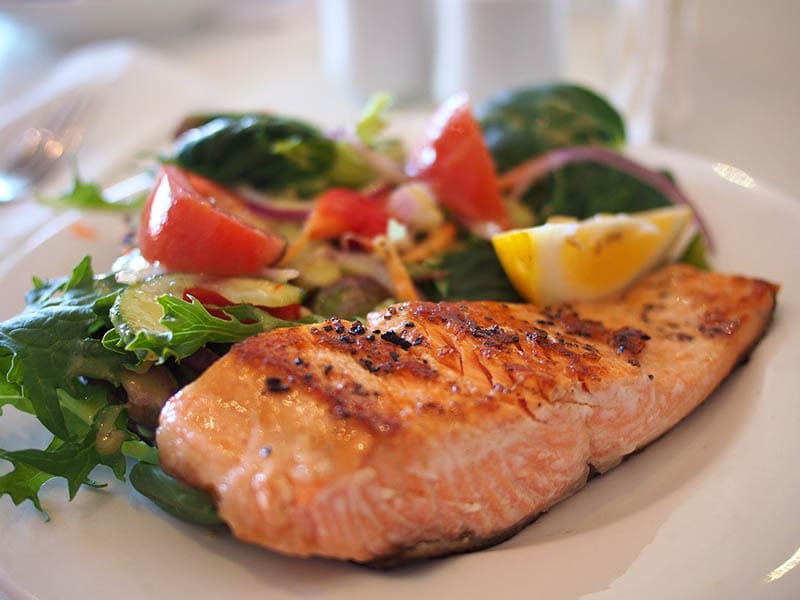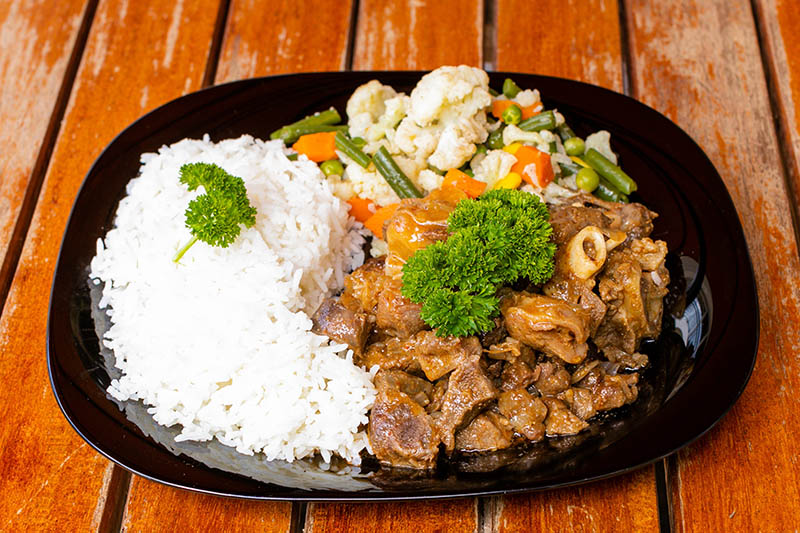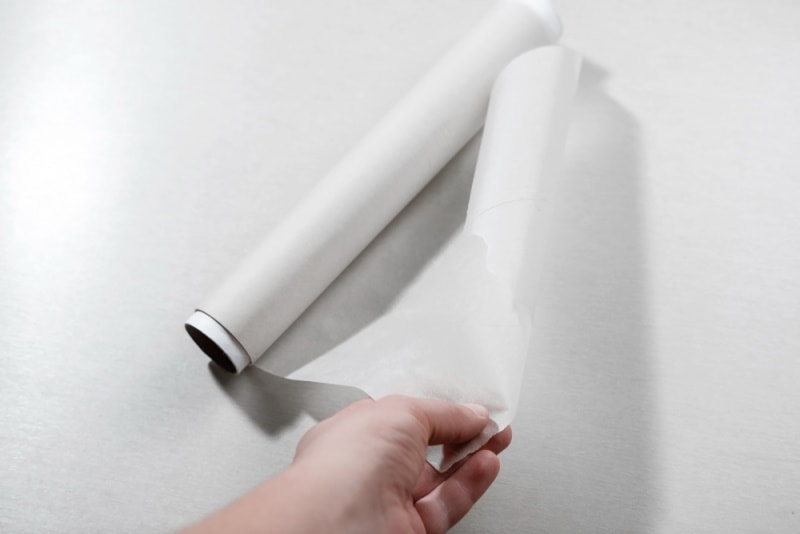Why Cover Food in the Microwave? 4 Important Reasons
-
Pete Ortiz
- Last updated:

The microwave has long been the ultimate symbol of the conveniences of technology, except when it comes time to clean up. As indispensable as they are for saving time, microwaves make life challenging when you forget to cover your dish. It only takes a few spins on the glass plate for soups, sauces, and other liquids to splatter and spray, offering a time-consuming chore alongside your piping-hot meal.
Protecting the dish to prevent those frustrating spills and splatters is a habit for most of us, but there are more reasons to cover food in the microwave than you might expect. Whether they’re liquid or not, we’ll explain four pivotal ways that covering your microwaved dishes can benefit you.
The 4 Reasons Why We Cover Food in the Microwave
1. Keep Food Moist

The dry texture of reheated food will turn even the tastiest leftovers into a mundane dining experience. Microwaves work by exciting water molecules in food, which is why foods with more water, such as vegetables, take less time to heat up. But by vibrating these molecules to the point of heating, they also cause water to convert to steam, allowing it to dry out faster.
When too much water escapes, we’re left to “enjoy” warm, rubbery, and relatively unappetizing food. By covering your dish with a loose, microwave-safe covering, you’ll retain moisture and, subsequently, a more pleasant texture.
If you can’t cover your dish, you can maintain moisture levels by letting a cup of tap water share the space with your food. Heated water from the cup will recirculate and boost the humidity for tastier, more tender, reheated leftovers.
2. Reheat Food Evenly
While microwaves eliminate virtually any guesswork, you still need to put in the slightest effort to stir your food a few times for even heating. Microwaves can develop cold spots, especially if your food isn’t rotating, and foods with different thicknesses and water content can heat at different rates.
The waves that heat water, fat, sugar, and other molecules in microwaved items only penetrate about ½”–2” into the food. After that, it’s up to the generated energy to transmit heat via conduction to the food’s inner sections. Parts on the outside cook faster than those on the inside, and stirring your food frequently moves the heat around and exposes untouched pieces of food.
Tips for Reheating Foods Evenly
Stirring may still be necessary even if you cover your food, but adding a seal will improve your results, as the cover redirects heat back into the dish and recirculates it for faster, more even heating. Taking into account the basic principles of how microwaves interact with food, a few common sense habits can help you reheat your dishes more evenly every time:
- Cut food up into small, equal-sized pieces
- Spread food evenly across your dish
- Cook food in circular containers, as corners can heat faster than the rest of the dish
- Put larger, thicker pieces of food on the outside edges of the plate to cook faster
- Reheat for longer on a lower power setting
After pulling a hot dish from the microwave, let it stand for about two minutes. Food continues cooking after you take it away from the heat source, so giving it time to rest will allow the heat to dissipate through the food.
3. Destroy Harmful Bacteria and Viruses

According to the CDC, microwaves can effectively inactivate various bacteria, viruses, and fungi in about 6 minutes. Food safety is always crucial with reheated leftovers, and you can enjoy added peace of mind when you cover your food. Covered food traps heat and moisture, pushing steam back into the food. While you keep your food moist, you also sanitize it, ensuring it’s safe to consume.
4. Save Your Defrosted Meats
Leftovers wouldn’t be the same if we didn’t have the speedy convenience of a microwave, but outside of reheating and cooking microwave-specific foods, it’s the last place anyone would want to turn to prepare a fresh meal. The rubbery taste of cooked meat can be particularly unpleasant, and in many cases, it’s impossible to salvage an off-putting texture.
The problem is common when defrosting. Though it’s quick and often unavoidable when you suddenly realize you forgot to take your meat out of the freezer right before dinner, microwave defrosting results can be subpar when it reheats unevenly.
Thin pieces of food cook quickly, while thicker interior pieces take a while. And since ice molecules don’t vibrate and create heat as efficiently as free-moving water molecules, they thaw much more slowly from microwaves. The frozen portions of a defrosting piece of food heat at an even slower pace than the thawed sections, causing a more egregious gap in the defrosting rate across the food.
Selectively Cover Your Food
By covering the thinner portions of your food, you can keep them from defrosting faster than the thicker sections. For this to work, you can turn to an unexpected helper—aluminum foil.
While aluminum foil has a well-earned reputation as a danger to microwaves, many appliance manufacturers and aluminum foil producers note its safe use in the machines. You must always follow the manufacturer’s recommendations, only using small bits of new and uncrinkled foil with no sharp edges to prevent dangerous arcing.
Foil is effective because, like the machine’s walls, it reflects microwaves. When you cover small areas of food, microwaves can’t pass through it as they would through glass or plastic, and the food can’t absorb the energy to heat its water molecules. The rest of the food heats and defrosts, but the thin section stays relatively untouched and safe from overcooking.
What Can You Use to Cover Food in the Microwave?
While aluminum foil can be used with extreme care in the microwave if you’re feeling bold, using it as an all-purpose cover to keep your food safe can spark a fire. Being cautious with any material is crucial to protect your food, your microwave, and, most importantly, yourself. The following are viable covers to try in the microwave and suggestions for safe use:
- Paper towels
- Waxed paper
- Plastic wrap: Pierce with a fork or vent otherwise to prevent steam buildup underneath, and do not let it make contact with the food
- Hard plastic lid
- Glass lids: Cover loosely to prevent burns from trapped steam
- Microwave cooking bags
- Parchment paper
- Storage bags: Use for low-heat reheating, as they can melt easily
Apart from metals, microwaves may not affect most materials directly, but heated food can warp and melt many of them, such as foam takeout trays. Before putting any new cover in the microwave, check the packaging and instructions to ensure it is safe to use as you intend.

Conclusion
Covering food does more than save you from a nasty cleanup, though that’s more than enough reason to add a lid to anything before tossing it in the microwave. You’ll save time and enjoy better-tasting food when you take a few seconds to put something over your dish. A microwave likely isn’t your go-to for most meals, but with these insights, you’ll ensure the best results whenever you need it.
See also:
- What Size of Microwave Do I Need? Everything You Need to Know!
- Can You Microwave Chinese Takeout Boxes? (Microwave Safety Tips)
Featured Image Credit: Andrey_Popov, Shutterstock
Contents


